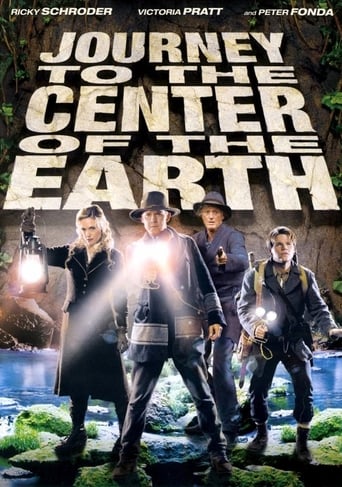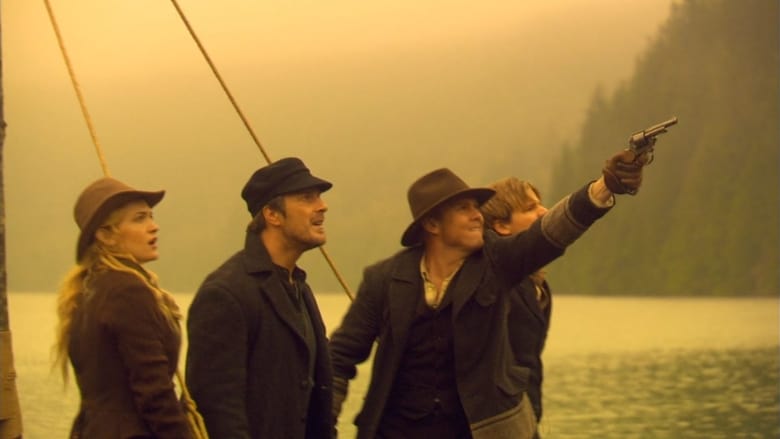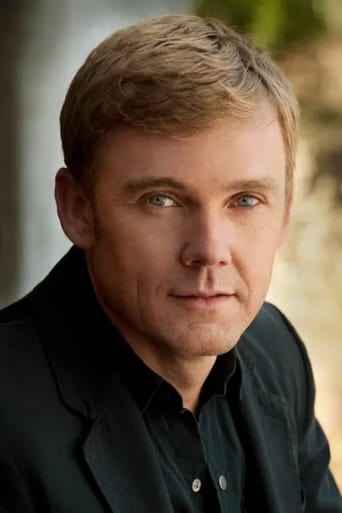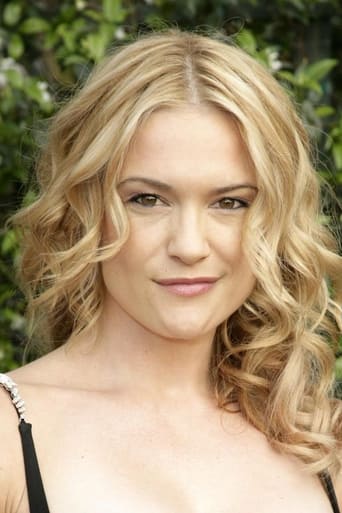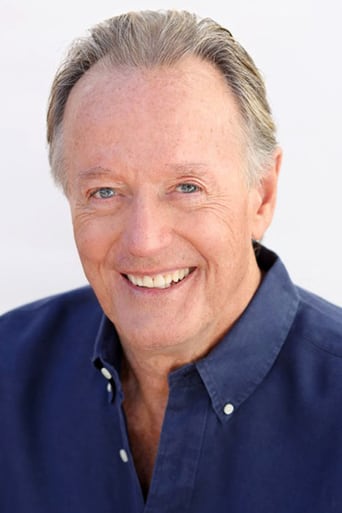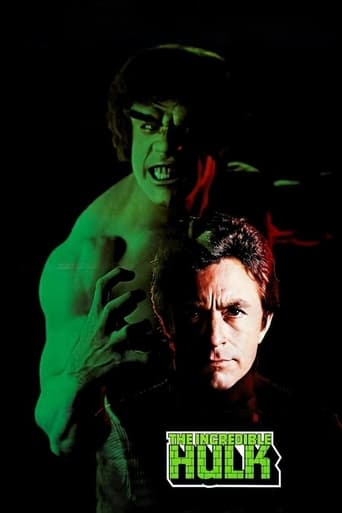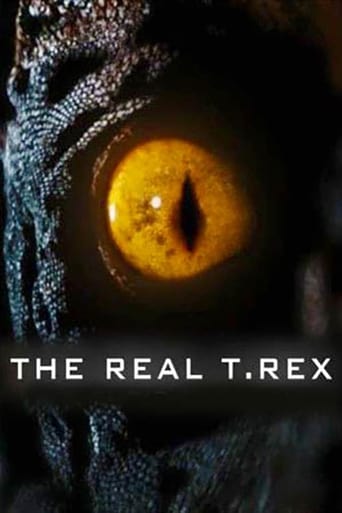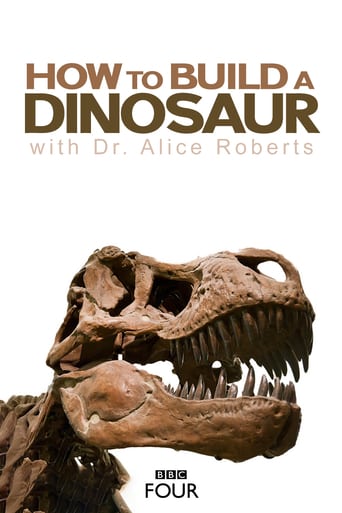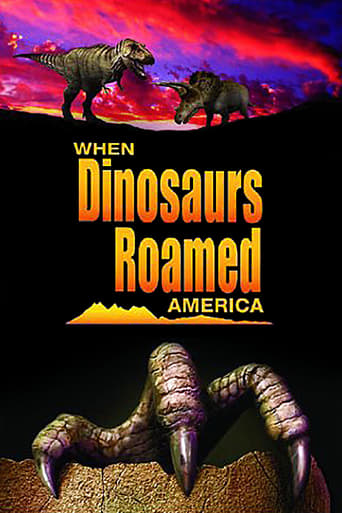Journey to the Center of the Earth (2008)
Set in the late 1870's - A woman hires an anthropologist/adventurer to track down her husband, who has disappeared while searching for an elusive passage to the center of the earth
Watch Trailer
Cast


Similar titles
Reviews
Sadly Over-hyped
Don't Believe the Hype
The story, direction, characters, and writing/dialogue is akin to taking a tranquilizer shot to the neck, but everything else was so well done.
An old-fashioned movie made with new-fashioned finesse.
If I'm being totally honest I recorded this version of Journey to the Center of The Earth believing it to be the 2008 remake with Brendan Fraser (I wasn't aware that there was a TV version till now). Having realised that it wasn't the version I expected once the opening credits started I decided to stick with it and here's what I thought....One thing I will say is that I think it's unfair to come down hard on this film purely because it's a 'TV movie' film. The acting was pretty bad, the animal effects were laughable (they weren't great in the original, but to be fair that was made in 1959). Despite all this, I did find this TV film to be fairly enjoyable. In this TV film we are treated to a voice-over narrative from Abel (whereby he is articulating notes that he's putting in his diary). At times, I thought that this was a nice touch as it does help to give a basic understanding of what some of the characters are thinking and how they feel. This narrative is also quite informative and helps to explain some of the things that they've discovered whilst they're in the cave. Where this falls apart slightly is that it's over-used and there are occasions when it's used to explain what's going to happen next - which is pointless as we'll know what will happen eventually. This isn't a major criticism as I found the voice-over work to be more of benefit than hindrance. I also thought that it got going fairly quickly and it was generally better paced than the original. It was all OK up till this point, but then came the final third....In this TV version of the film, our intrepid adventurers stumble across a tribe of people who have descended from earth down to the Centre of the Earth centuries ago. Just when you think it can't get any more ridiculous we then find that the tribal people are worshipping Martha's missing husband as some sort of god. I mean really? Before our adventurers met the tribes people my biggest criticism is that there was a lack of tension because no-one was pursuing them or following them like we saw in the original - alas this objection was answered at this point, but it was answered in a ridiculous and nonsensical way. The issue of food was ignored initially, but then answered when our adventurers are treated to a 'Last Supper' style feast - quite where all the food came from is a complete mystery. What I can't understand is that a film of this nature is supposed to be shrouded by mystery, our adventurers have had to use a map and a modicum of intelligence in order to get to the area that the tribe are inhabiting and yet we're supposed to believe that this tribe of people have discovered this area by mistake. It just requires too much suspension of disbelief and doesn't give the film any kind of intensity. In the original, you really felt that the team were isolated and you felt that they'd achieved something by the end, but you don't get that feeling here and it ultimately made this film a lot less rewarding and a lot less enjoyable.Up till the 60 minute mark I did think this was an OK film - it was reasonably enjoyable without being anything special. However, it's ultimately ruined by its final 30 minutes where it descended into absurdity, implausibility and downright stupidity.
Veteran television director T.J. Scott's made-for-cable spin on Jules Verne's venerable crackpot classic "Journey to the Center of the Earth" qualifies as lackluster juvenile nonsense. Apart from the use of Verne's name, the title of his novel, its 19th century setting, and some isolated incidents from the text, including an encounter with dinosaurs, this movie shares little in common with Verne's text. This version relocates the action to Alaska in the 1870s so that it initially looks like a hybrid western. No, The protagonist, a financially strapped San Francisco-based archaeologist Jonathan Brock (Ricky Schroder of "N.Y.P.D. Blue"), proves he is no armchair academician. The first time we lay eyes on Brock, he is slugging it out with an opponent in a bare-knuckles boxing match. As it turns out, this is how Brock raises money to fund his expeditions. Whenever actor Ricky Schroder gets near a boxing ring, you cannot help but remember one of his early and most memorable roles as a kid who hung out with a championship boxer in "The Champ." Jules Verne's protagonist, German-b0rn Professor Liedenbrock, was nothing like Brock. Liedenbrock was a professor of, as Verne wrote, "chemistry, geology, mineralogy, and many other ologies." Once he triumphs over his knuckle-headed adversary, Brock and his young nephew, Abel (Steven Grayhm) who dreams of life as a journalist, return home. A wealthy, blonde, heiress Martha Dennison (Victoria Pratt) approaches Brock about a proposition. She has been trying to locate her missing husband, Edward Dennison (Peter Fonda of "Easy Rider"), who vanished about four years ago searching for a passage to the center of the earth. Actually, Dennison discovered a passage through an abandoned mine, though Brock believes that no such mine exists. In any case, in Verne's tale, no woman like Martha approaches Liedenbrock about a rescue mission to the center of the Earth. Martha offers to fund his expedition to East Indies if he will help her find her husband because the two men think alike. "I'm no detective," Brock point out. "I'm a scientist." Martha retorts, "I'm looking for a man who can put himself in Edward's place, an adventurer who can think, strategize, and execute a plan as he would. A man who can discover and follow the trail he would have taken." Our heroes travel by ship to Alaska, ride like hell over rugged terrain, climb a lot of ropes, and waggle their jawbones. Eventually, they reach a point where they have to calculate how to enter the Earth's crust to access the interior world. Scott and writers Thomas "The Manhattan Project" Baum and William "Prom Night" Gray stage a scene where our heroes arrive at their destination punctually in ten days time to determine where the sun's rays penetrate the Earth so that they can locate the hidden mine shaft. This serves as their point of departure for the center of the earth. They emerge near a lake at the base of a volcano. Martha goes skinny dipping while the three guys are away, and she gets the crap scared out of her when something underwater touches her. Jonathan, Abel, and their guidea Czarist refugee Russian called Sergei Petkov (Michael Dopud of "The Pathfinder") who had earlier saved Brock's life fabricate a raft out of timber left-over from Dennison's expedition. The best part of this lowbrow thriller occurs on the lake when a prehistoric serpent appears in several shots and some of the worse looking prehistoric birds are there, too. There is a good shot of the serpent from the bottom of the lake looking up at the raft that our heroes are sailing. Unfortunately, unlike Verne's tale, the producers couldn't afford a second prehistoric creature so that they could replicate the fight in Chapter 30 of Verne's novel.Essentially, Dennison's story resembles Rudyard Kipling's tale "The Man Who Would Be King" where two Englishmen enthroned themselves as monarchs until one bled and the villagers executed him and exiled the second. Dennison rules a tribe of Native American Indian types that rely on bows and arrows. These people have migrated to the center of the Earth. The finale with our heroes fleeing from fierce Native American-like primitives is ho-hum. It seems that Dennison rigged up a trolley system of ropes in the trees, and our heroes and heroine slide down these ropes ahead of the pursuing redskins on hand-clinched trolleys. Scott never conjures up any suspense because you know that Brock, Martha, Abel, and Sergei are going to survive the myriad perils. The most surprisingly scene occurs when Dennison shoots a warrior in the head in the manner of an execution. A furious Martha strikes Edward for killing the warrior in cold blood and the sight of blood turns Edward's people against him and forces our heroes to flee for their lives. Earlier, Dennison's wife Martha and Brock squabble about a variety of things, while Abelmaintaining a journal of their experienceshints at the romance burgeoning between them. At one point, Martha explains that she was been married to Edward for a year. Edward has little use for her when they reunite at the center of the earth. Once they escape from the center of the Earth, MarthaLiedenbrock's housekeeper in Verne's novel had the same namewants to accompany him on further adventures.Scott's version of "Journey to the Center of the Earth" is strictly disposable. Peter Fonda isn't worth the wait and his characterlike the rest of the charactersare far from memorable. The Canadian scenery lends some splendor to our heroes' shenanigans, but the shoe-string budget often undermines the film's epic quality. Lenser Philip Linzy's cinematography is the best thing about this execrable adventure.
During the first few years of the 21st century, new versions of JOURNEY TO THE CENTER OF THE EARTH continued to be announced but remained unproduced. Finally, in 2007, a new big budget version was made, JOURNEY TO THE CENTER OF THE EARTH 3-D, and as so often happens, simultaneously a lower budget rendition of the same story was made to cash in on the former's anticipated popularity. In this case, the filmmakers did not return to the novel, but as with the 2005 version of MYSTERIOUS ISLAND, chose to instead remake an earlier adaptation.Robert Halmi, Sr. dusted off the script of his 1999 version of JOURNEY TO THE CENTER OF THE EARTH, compressing it back to a 90 minute telefilm for RHI entertainment that appeared on the ION network on January 27, 2008. William Bray adapted the 1999 Tom Baum teleplay, this time helmed by T.J. Scott (probably best remembered for some of the most imaginatively directed episodes in the HERCULES and XENA series). The principal characterizations and motives remained the same, only compressed and more tightly paced.The setting remains around the 1870s but is transplanted to San Francisco and Alaska (still known as "Seward's Folly" and with vestiges of Russian influence). These locales and a center of the Earth that resembles it were all a result of the Vancouver location shooting determining production design. However, the switch to an American background also gives the adaptation more of a natural, domestic, and less of an exotic feeldistinct from previous versions, which is a strength, but also familiar types of scenery, such as a western-style Alaskan town and costume. While director Scott makes the most of the backgrounds, the fact that the center of the earth looks almost exactly like the world above makes the narrative ultimately less convincing. Far more memorable were the unusual visuals achieved by the 1999 version.From the first scene it is clear that this is little more than a retelling of the earlier film, with the basic characters and situation remained as before. Neither Rick Schroeder or Steven Grayhm, respectively, are as appropriate for their roles as were Treat Williams and Jeremy London in 1999. By contrast, the female lead this time is incarnated this time much more vigorously and convincingly by Victoria Pratt. She has a decade of female action roles to her credit and is also the wife of director Scott, and they have a long list of collaborations together. She has a map leading to a mine shaft which goes to the center of the Earth, down which her husband had descended four years earlier and never returned. As before, part of her motive is to redeem her role in a marriage gone sour.Central to the rapid unfolding of the story is the reliance on the first person narration ostensibly from the diary kept by young Abel, who dedicates it to his fiancée, angry at his departure on the journey. Most intriguing is the change in the Hans character from the novel; the new version offers a Russian outlaw, Sergei, whose brother had descended with the husband. This provides an appropriate shift of character that merges with the new locale, and also, unlike all previous versions, a compelling reason for the "guide" to descend with the others. Sergei is also vital in helping the expedition reach the lake where, according to the map, on a single July day of the year the sunlight will point out the location of the mine.There is an attenuated telling of the journey to the underground lake. The only marker among the caves is one at the beginning, in Russian, telling them the correct initial cave to take. On the way, the remains of Sergei's brother are found.By the shore, trees freshly felled with an axe indicate an earlier traveler, and they decide to also make the journey by raft. Prehistoric birds and a pleisiosaur attack the raft, creatures described as extinct since the ice age. The use of effects is brief and has little impact on the story. Subsequently the film veers in new directions, as in the 1999 version, leaving Verne's novel behind.An encounter at the shore with a wrecked raft leads to natives who resemble Native Americans, leads, predictably, to finding the husband (Peter Fonda, a modest improvement over the 1999 film's Bryan Brown), who has taken advantage of superstition and made himself king. Some warriors are resisting Edward's rule, and when they unite in opposition, Edward leads the way to a cave reputed to be the way out. Unlike the 1999 version, he is allowed redemption by sacrificing himself to save the others by staying behind to guarantee a dynamite charge that will block the cave. Water overcomes the foursome until finally they are sent to the surface of a lake in a waterspout. They decide to save the tribe from further exploitation by the above-ground world and Abel will keep his diary secret, or in fact, sayas he does in the final sentencethat it is merely a piece of fiction. Meanwhile, Jonas and Martha have realized their attraction for each other.In this version, the more rapid pacing does not allow the viewer to be quite as aware of the hokeyness of the subplot with the tribes as in the 1999 version. Still, the principal question remains why the producers thought the script of the 1999 version was good enough to deserve a remake. Likely, as in the choice of the Vancouver location, it was simply a matter of the most budget-conscious way to proceed. Still it remains a valid question for audiences to ask.
It's always difficult for me to watch a movie after having read the book it's allegedly based upon. Anyways, I decided to try this one, and I have to say I can't find any part of it that'd be based on the Jules Verne novel (except the title, of course). It's amazing to see how professor Otto Lidenbrock from Hamburg became Jonathan Brock, his nephew Axel became Abel, how his Danish guide Hans Bjelke morphed into Sergei Petrov, and how the expedition that originally started in ICELAND at the end of June, suddenly changed to Alaska in September. But most important is the complete lack of respect for the original plot and its characters, to the point that the movie shares nothing with the book they say it follows. I do understand that most books can not be adapted faithfully to the screen, but there's a difference between taking a few creative licences and making a completely different story. So, I'd like to ask Mr. William Gray to, PLEASE, read the book before saying his script is based upon it, or otherwise take the credits (and responsibilities) of signing his own stories.

